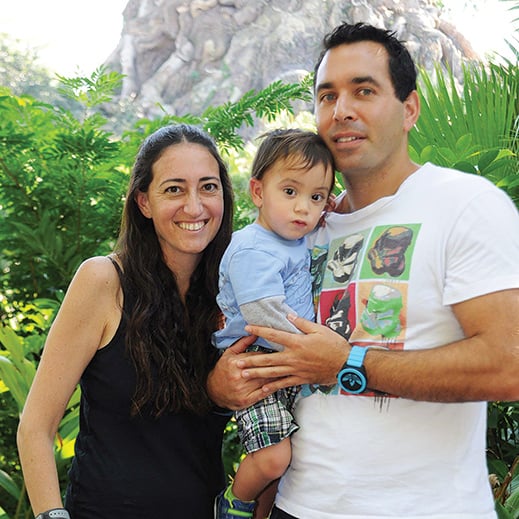When Joshua Strickon sits down with his wife at a restaurant and sees his fellow diners scrolling through in-boxes or texting on smartphones, he does not turn to her to say, “You know, I helped invent that.” But he could: he’s a patent holder for the multitouch screen.

Yet the popular fixation on technology—which Strickon calls “too much product and not enough filter”—makes him ambivalent about his early work at Apple.
Strickon joined Apple’s input engineering group after earning his MIT degrees working in the Media Lab on new input devices for interactive music, wearable computing, and robotics. “One of my roles was to be part of a secret team with people from Industrial Design and the Platform Experience group that started off with the idea of reënvisioning the input on the Mac,” he says. “That morphed into the motivation to build a tablet.”
Strickon worked on finding glass that would respond to a finger’s touch and creating the circuitry and algorithms that would make that experience easy and pleasant. In the resulting patents, Apple named him as one of three creators of the multipoint touch screen.
Though the technology excited Strickon, Apple was slow to develop it, and he left in 2004. In 2006 he landed a job at the New York Times Company in its newly formed R&D group, just as the company’s mobile properties were being launched.
“The whole company was two years behind in mobile; we were playing catch-up,” he says. “And like all early adopters in the publishing industry, they gave away too much for free.”
Strickon started freelancing in 2008, seeking more control over the development process. While his early work still reverberates—he was subpoenaed three times in Apple’s recent disputes with Samsung and Motorola—he is busy thinking about his next projects.
From his Miami home, dubbed Ocean View Lab, Strickon now counts Disney and Hasbro as consulting clients. He also sits on the board of Thrill Science, a consulting company that works with the entertainment industry, and volunteers for the computer graphics organization ACM SIGGRAPH. He enjoys the freedom that comes with following his own instincts as he develops robotics, toy, and tech projects.
“I’m a big fan of simple interfaces,” he says. “Too often, tech is designed by engineers for engineers. I take a more open approach and think about how things will be used every day.”
When not at work, Strickon kiteboards, trains for half-marathons and triathlons, and enjoys time with his two-year-old son, Jaiden, and his wife, Ilana.
Keep Reading
Most Popular
Large language models can do jaw-dropping things. But nobody knows exactly why.
And that's a problem. Figuring it out is one of the biggest scientific puzzles of our time and a crucial step towards controlling more powerful future models.
The problem with plug-in hybrids? Their drivers.
Plug-in hybrids are often sold as a transition to EVs, but new data from Europe shows we’re still underestimating the emissions they produce.
Google DeepMind’s new generative model makes Super Mario–like games from scratch
Genie learns how to control games by watching hours and hours of video. It could help train next-gen robots too.
How scientists traced a mysterious covid case back to six toilets
When wastewater surveillance turns into a hunt for a single infected individual, the ethics get tricky.
Stay connected
Get the latest updates from
MIT Technology Review
Discover special offers, top stories, upcoming events, and more.